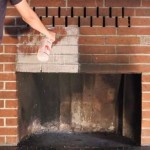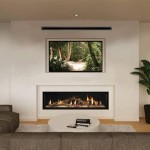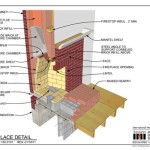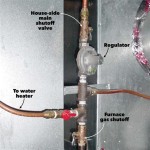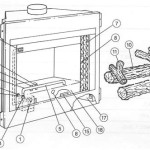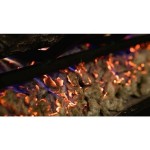How to Measure Your Fireplace for Gas Logs
Installing gas logs can transform a traditional wood-burning fireplace into a convenient and aesthetically pleasing source of supplemental heat. To ensure a proper fit and optimal performance, accurate fireplace measurements are essential prior to purchasing a set of gas logs. The following provides a comprehensive guide to measuring a fireplace accurately for the selection and installation of gas logs.
Understanding the Importance of Accurate Measurements
Precision in measuring the fireplace cavity is paramount for several reasons. Firstly, gas logs must fit comfortably within the firebox without being crammed or touching the sides. Overcrowding can impede proper airflow and potentially create hazardous conditions, impacting the efficiency and safety of the unit. Secondly, the size of the gas log set directly correlates with the heat output. Choosing logs that are too small may not provide sufficient warmth, while logs that are too large could overheat the fireplace and surrounding areas. Finally, incompatible dimensions can lead to installation challenges and potentially necessitate costly modifications or returns. Therefore, taking the time to measure accurately is a worthwhile investment in the long run.
Essential Tools and Preparation
Before embarking on the measurement process, gather the necessary tools. A metal measuring tape, preferably one that extends to at least 25 feet, is critical. Cloth or flexible measuring tapes are not recommended as they can stretch and produce inaccurate readings. A notepad and pen or pencil are also needed to record the measurements systematically. A flashlight or a headlamp can be useful for illuminating the interior of the firebox, particularly in dimly lit rooms. Lastly, a level can help determine if the fireplace floor is even, which could affect the perceived height measurements. If the fireplace is currently in use, ensure that it is completely cool before beginning. It is also advisable to remove any existing grates or decorative items from the firebox to obtain unobstructed measurements.
Step-by-Step Measurement Guide
The following steps outline the process for accurately measuring a fireplace for gas logs:
1. Measure the Firebox Width: Begin by measuring the width of the firebox at its widest point. This is typically at the front of the fireplace opening. Extend the measuring tape from one side wall to the other, ensuring the tape is level and taut. Record this measurement as the "Front Width." Next, measure the width at the rear of the firebox, from one back wall to the other. Record this as "Rear Width." These two measurements may differ, especially in older fireplaces, and both are important for determining the appropriate size of the gas log set. A gas log set should fit comfortably between the front and rear widths.
2. Measure the Firebox Depth: The depth of the firebox is the distance from the front of the fireplace opening to the back wall. Extend the measuring tape from the front edge of the firebox opening to the farthest point on the back wall. Ensure the tape is parallel to the floor of the fireplace. Record this measurement as the "Depth." This measurement dictates how far the gas logs can extend into the firebox without obstructing the flue or creating a fire hazard.
3. Measure the Firebox Height: The height measurement is the vertical distance from the floor of the firebox to the lowest point of the flue opening or damper. Use the measuring tape to determine this distance. It is crucial to measure to the lowest point of the flue, as obstruction of the flue can lead to carbon monoxide buildup. Record this measurement as the "Height." This measurement ensures adequate vertical clearance for the gas logs and any associated hardware, while still allowing proper ventilation.
4. Measure the Damper Opening: The damper is a movable plate that regulates the airflow within the fireplace. It is usually located at the top of the firebox. While not directly related to the gas log size, knowing the damper opening dimensions is essential for ensuring proper ventilation. Measure the width and height of the damper opening when it is fully open. Record these measurements for reference when evaluating the overall fireplace system's ventilation capacity.
5. Determine Gas Line Access: Before selecting a gas log set, identify the location of the existing gas line within the fireplace. This is crucial for connecting the gas log set to the gas supply. Note the position of the gas line (left, right, or center) and its distance from the back wall or side wall. This information helps determine the type of connection hardware required and ensures a seamless installation. If a gas line is not already present, professional installation is required.
Interpreting Measurements and Selecting Gas Logs
With accurate measurements in hand, the next step involves interpreting these figures to select an appropriate gas log set. Most gas log manufacturers provide size charts that correlate fireplace dimensions with recommended log set sizes. These charts typically specify minimum and maximum dimensions for the firebox width, depth, and height. Select a gas log set that falls within these recommended ranges. Consider the style of the logs as well. Some logs are designed to sit higher than others, potentially impacting the height requirement. Allow for a few inches of clearance on all sides of the logs to ensure proper airflow and prevent overheating. It is always better to err on the side of selecting a slightly smaller log set than one that is too large. If unsure, consult with a qualified fireplace professional who can provide personalized recommendations based on the specific fireplace dimensions and heating needs.
Furthermore, the BTU (British Thermal Unit) rating of the gas log set should be considered. This represents the heat output of the unit. Choose a BTU rating that is appropriate for the size of the room being heated. A gas log set with a higher BTU rating will produce more heat, while a set with a lower rating will produce less. Overestimating the heating requirements can lead to an uncomfortably warm room, while underestimating may result in insufficient heating. Consult with a professional or use online BTU calculators to determine the optimal BTU rating for the space.
Finally, examine the aesthetics of the gas log set. Consider the realism of the log design, the flame pattern, and the overall appearance of the unit. Choose a gas log set that complements the existing décor of the room and provides the desired ambiance. Many gas log sets are available in a variety of styles and finishes, allowing for customization to match individual preferences.

How To Measure For And Choose A Gas Log Set Logs
.png?strip=all)
How To Measure For And Choose A Gas Log Set Logs

Measuring Your Fireplace For The Installation Of A Gas Log Set

What Size Gas Logs Do I Need How To Measure A Fireplace For

Not Sure What Size Gas Logs You Will Be Needing Use This Example To Help Measure And Let Us Find The Right S Fireplace
.png?strip=all)
How To Measure For And Choose A Gas Log Set Logs

The Proper Way To Measure Dimensions Of A Fireplace

Frequently Asked Questions San Diego Chimney Sweep Prefabricated Fireplace Specialists

How To Measure Your Fireplace For Gas Logs

How To Measure A Fireplace For Gas Logs

